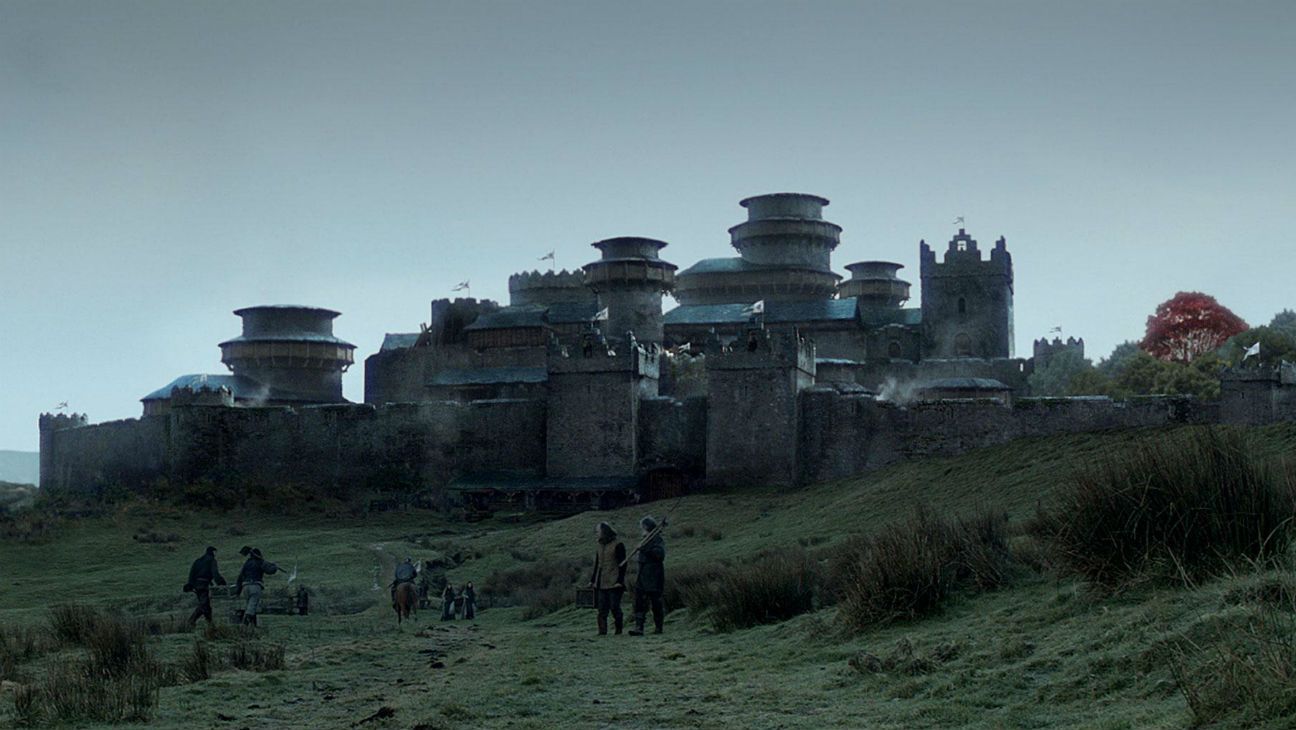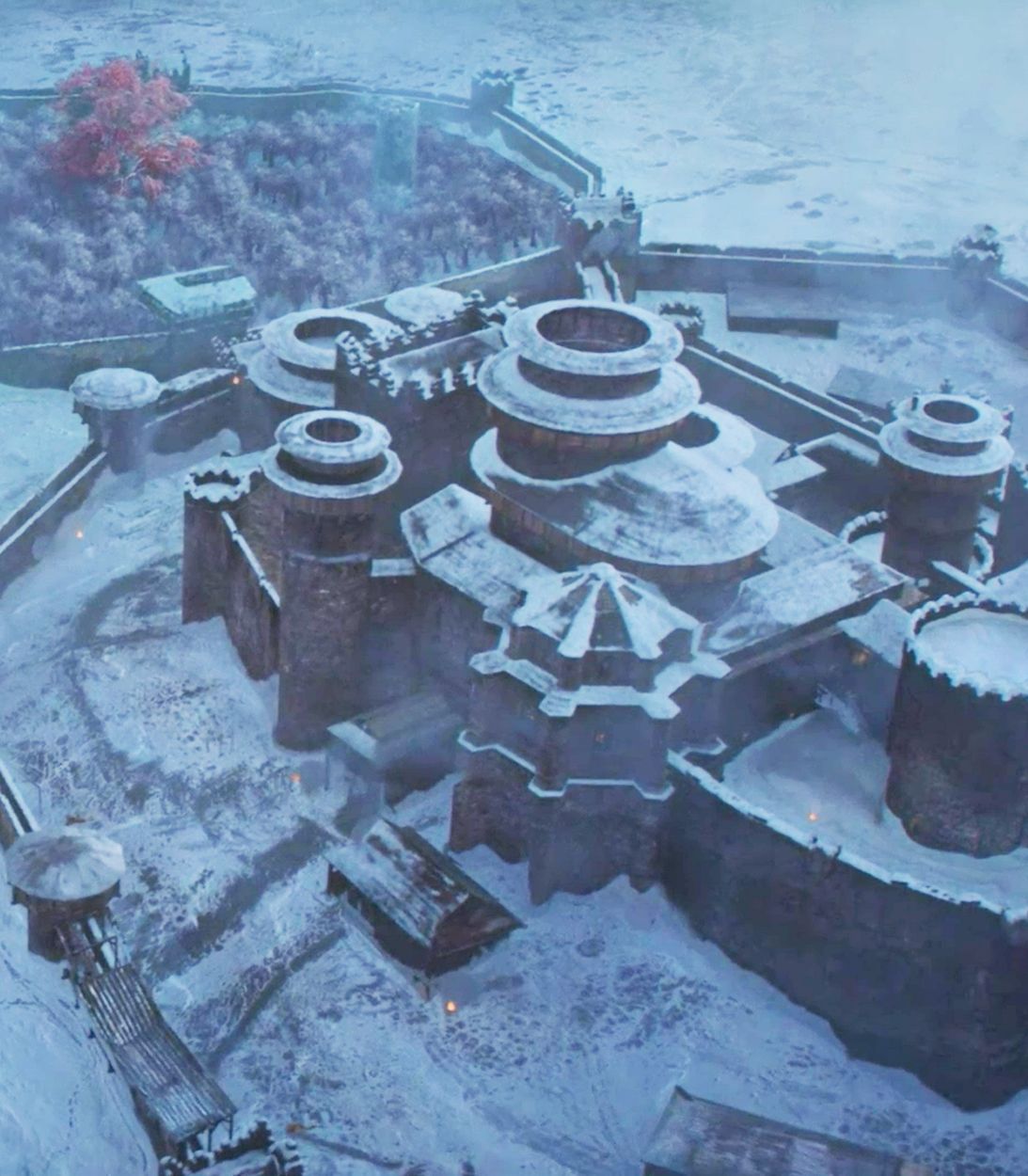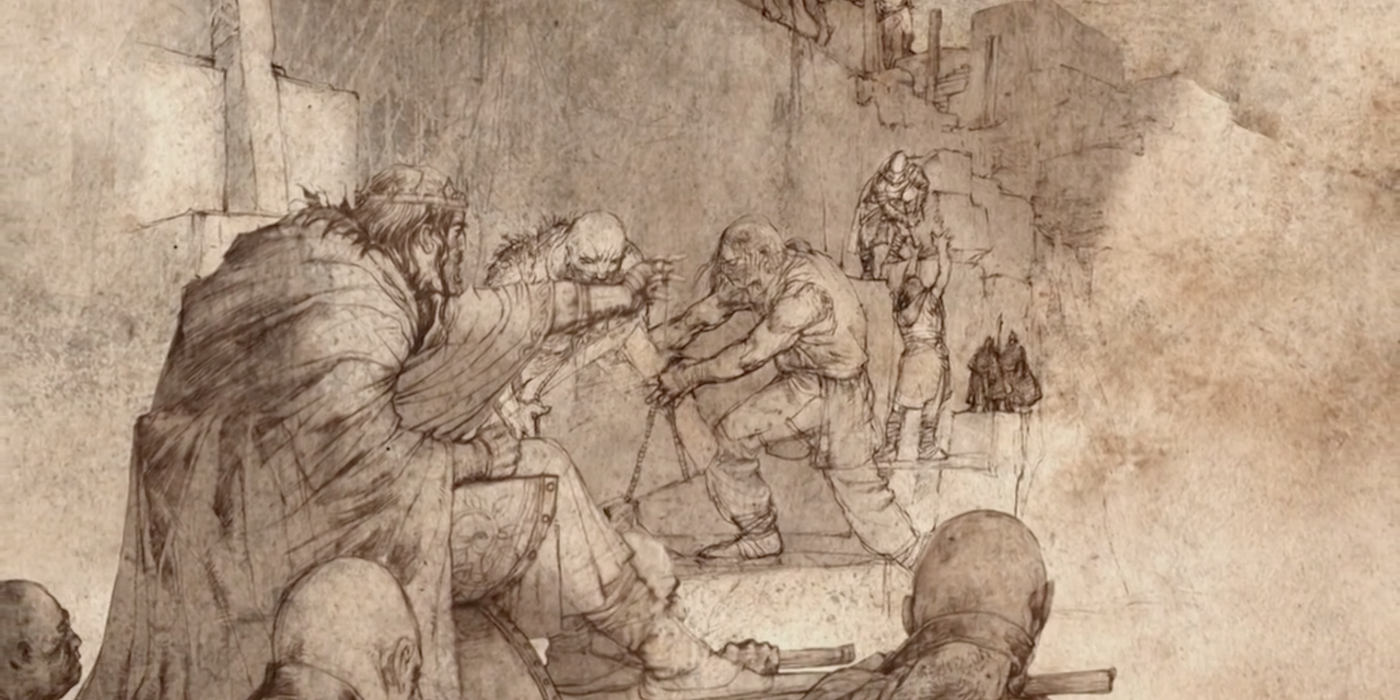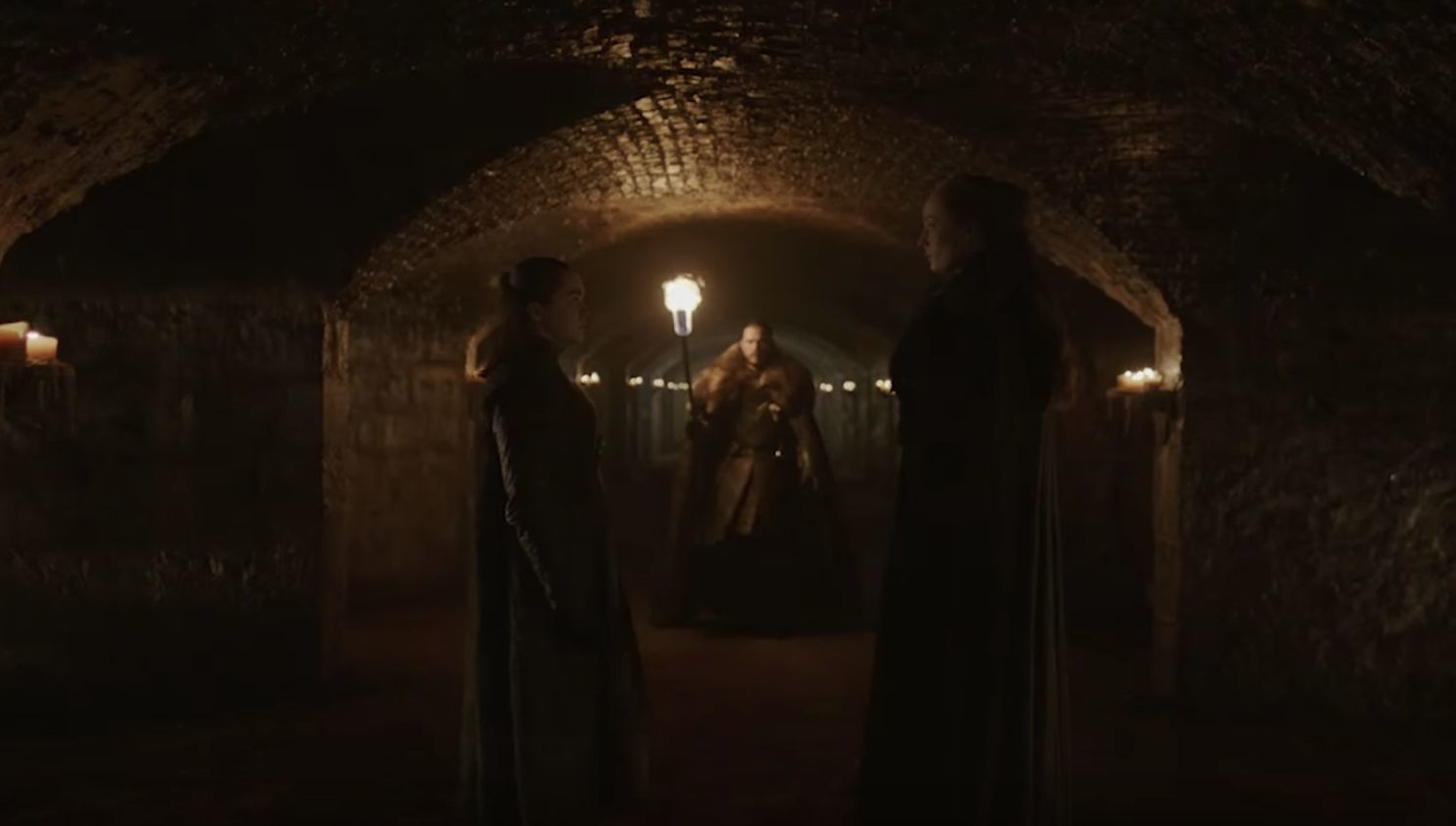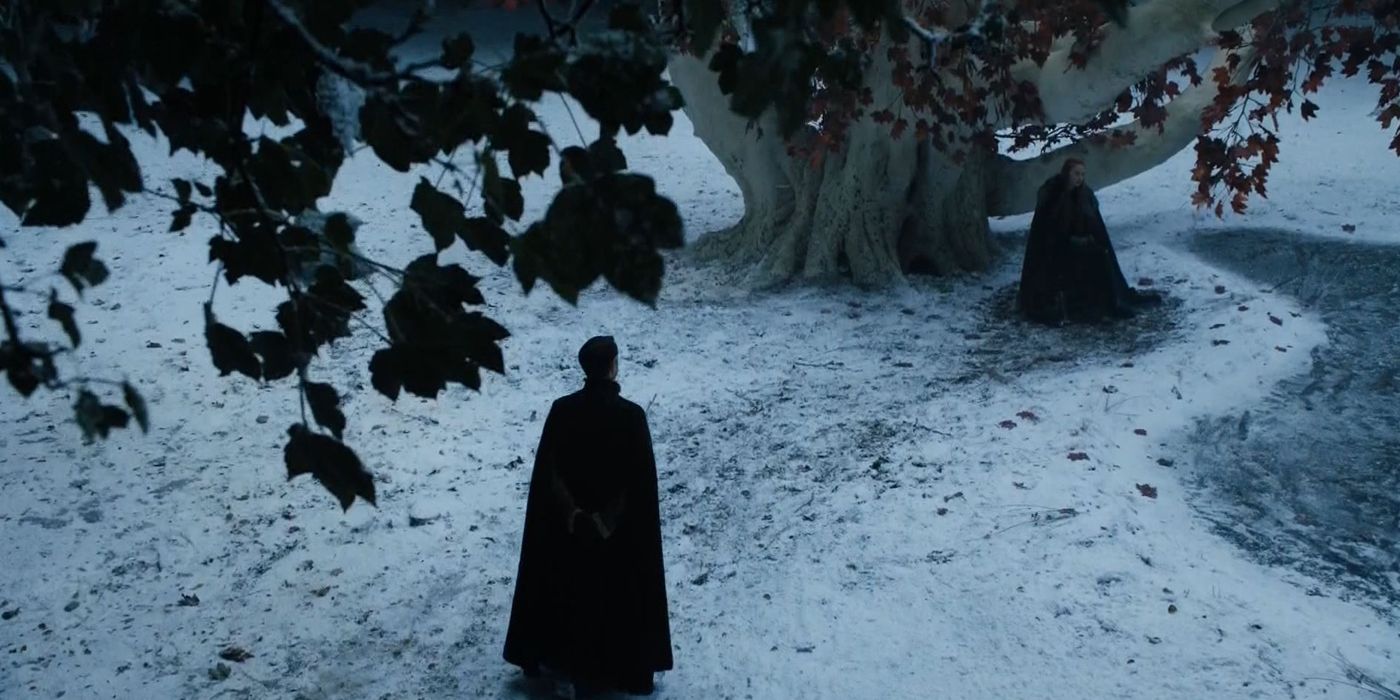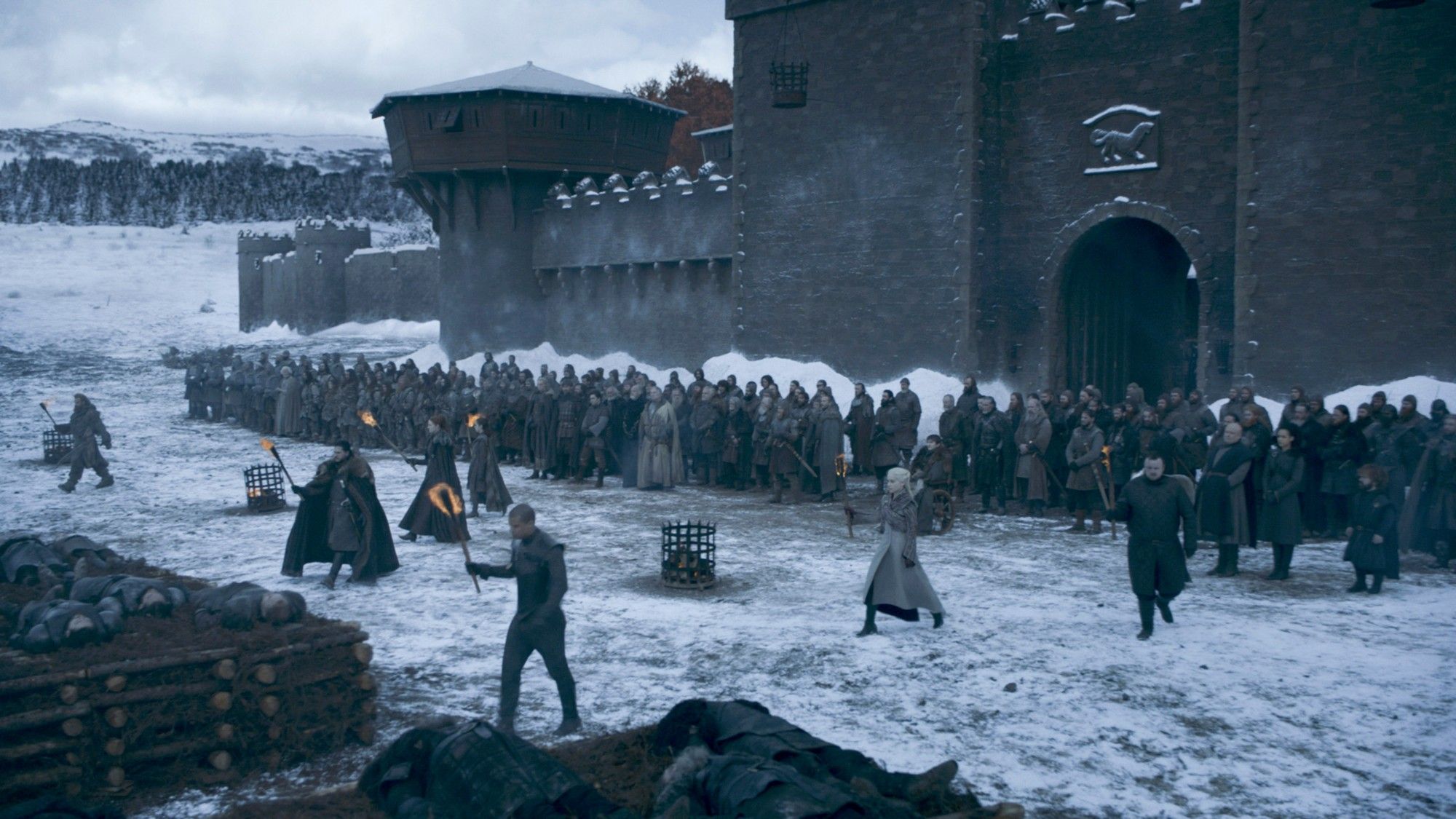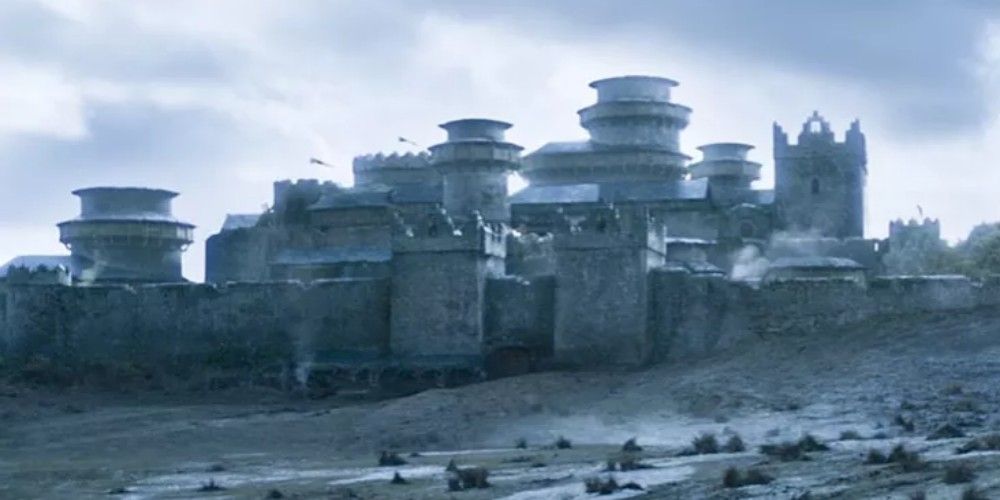Outside of the Wall or the Red Keep, Winterfell is arguably the most iconic location in author George R.R. Martin’s A Song of Ice and Fire series and its wildly popular HBO adaptation, Game of Thrones. The ancestral home of House Stark, this ancient castle – which serves as the unofficial capital of the North – has played host to several key events over the course of the narrative.
But while even casual fans of the series will instantly recognize Winterfell’s distinctive battlements and heart tree, there’s still plenty about the legendary stronghold that only the most hardcore devotees are aware of. So with this in mind, we’ve rounded up 10 Things You Didn’t Know About Winterfell, to help bring those of you less familiar with Game of Thrones lore up to speed on this fascinating landmark.
The Castle Grounds Were Never Levelled
When Winterfell was constructed, those responsible never bothered to level out the terrain upon which they were building. As a result, the castle grounds are uneven, encompassing multiple hills and valleys, and necessitating that certain floors in the stronghold be erected on an incline.
Funnily enough, this isn’t the only anomaly that applies to Winterfell’s construction, as its overall layout also has a tendency to change – at least on the Game of Thrones TV show! As eagle-eyed viewers will already have noticed, the castle’s existing geography is dramatically altered from Season 5 onwards, in order to accommodate the story’s requirements.
Its Library Contains Several Unique Books
Any great castle worth its salt boasts a well-stocked library, and Winterfell is no exception in this regard. Indeed, an entire tower is devoted solely to storing Winterfell’s extensive collection of tomes – several of which aren’t available anywhere else (not even the Citadel!).
Among the many incredibly rare volumes lining the Winterfell library’s shelves, easily the most impressive is Ayrmidon's Engines of War. As no other copies of this antique hardcover are known to exist, it ranks among the most priceless treasures in the entire stronghold.
It Has Several Hidden Passages
Although fortresses like Winterfell are primarily designed to keep unwanted visitors from entering, they also need to be able to facilitate scenarios where the occupants need to exit unobserved.
So it’s hardly a surprise when, in Game of Thrones Season 2, Maester Luwin announces the existence of secret passages dotted throughout Winterfell, built to allow the Starks to escape should their castle fall into enemy hands.
Interestingly, Winterfell’s fabled crypts are supposedly so vast that you could hide there undetected almost indefinitely, rather than fleeing outright – provided you had an adequate supply of rations, that is!
It Was Constructed 8,000 Years Ago
As described in George R.R. Martin’s novels, Winterfell is a rambling complex comprised of a variety of different buildings and fortifications. This eclectic layout – which lends Winterfell a less thought-out vibe than other, similar strongholds – is a by-product of the original structures being added to over a lengthy period. How lengthy are we talking here? Try 8,000 years!
That said, this eight millennia timestamp might not be 100% accurate. See, construction of Winterfell is attributed to Bran the Builder, who according to legend, built virtually every noteworthy structure in Westeros – a dubious notion that casts doubt on the accepted facts regarding Winterfell’s exact construction date.
Only A Handful Of Non-Rulers Have Statues In The Crypts
Prior to Aegon the Conqueror’s invasion of Westeros, the North was its own kingdom, which the Starks ruled from their seat of power, Winterfell.
Following the demise of each King (and Queen) in the North, a statue would be installed in the crypts along with their remains – which means that, theoretically, no new statues should have been raised after King Torrhen bent the knee.
However, Lord Eddard Stark bucked tradition when it came time to bury his brother Brandon and sister Lyanna – commemorating both his departed loved ones with sculptures worthy of the rulers of old.
Its Godswood Is 10,000 Years Old
While the Faith of the Seven is now the dominant religion throughout Westeros, many in the North still worship the Old Gods of the Forest. A great example of just how embedded the Old Gods are in this region, look no further than Winterfell’s Godswood.
This three-acre wooded reservation – the centerpiece of which is a striking heart tree – has been cultivated for an astonishing 10,000 years and counting by House Stark. Surely, there can be no better illustration of the Starks’ enduring adherence to the ancient rites and customs than that!
Ramsay Snow Burnt It Down
Admittedly, this entry won’t be news to those who’ve read the A Song of Ice and Fire novels, but it’ll come as a shock to Game of Thrones viewers: Ramsay Snow left Winterfell in a serious state of disrepair. Sure, Ramsay and his men did a number on the castle in the show – but in the books, they burned all the non-stone structures to ashes.
True, Roose Bolton subsequently rebuilt some of these. But even so, this Westeros landmark is currently in decidedly shabbier condition than portrayed in the TV series (at least, until a couple of weeks ago…).
There’s A Winter Town Just Outside Its Walls
The winter town outside of Winterfell’s walls does appear on numerous occasions in Game of Thrones – it even factors into the very first episode! However, we’re willing to bet that only fans of the books will have even the slightest inkling of this location’s backstory, considering it goes unexplained on-screen.
As its name suggests, this modest settlement’s population balloons once the first snow starts to fall. Otherwise, the winter town stands largely deserted during the warmer seasons while the common folk are out working the land, accumulating enough supplies for the long winter ahead of them.
It Has Central Heating
Like all the castles in Game of Thrones, Winterfell is ostensibly no different to any real-world fortress from the medieval era. Nevertheless, for all its old-world trappings, guests at House Stark’s ancestral home can look forward to at least one contemporary creature comfort: central heating.
You read that right – as Winterfell rests atop many subterranean hot springs, its designers were able to reroute this heated water through the castle walls via an ingenious system of pipes and pumps. Amazingly, the heat generated by Winterfell’s plumbing is so intense, the stronghold’s greenhouse even yields fruit and vegetables during winter!
Its Tallest Tower Was Destroyed Over A Century Ago
Given its size, it’s to be expected that the Winterfell complex counts more than one tower among its battlements. Similarly, when Winterfell’s age – a whopping eight millennia, no less! – is taken into account, it figures that at least one of these towers has since toppled over.
Sadly, the tower in question was also the stronghold’s tallest spire, which collapsed after a bolt of lightning set it ablaze 140 years prior to the first book in the series, A Game of Thrones, and was never repaired.
–
What are some other little-known facts about Winterfell? Let us know in the comments!

